Sure, you could go to a museum to see priceless works of art or Brontosaurus bones.
But if your taste runs more toward the macabre, consider these terrifying attractions.
Lizzie Borden Bed and Breakfast Museum – Fall River, Massachusetts
We all know the story of precocious spinster Lizzie Borden, who may or may not have given her mother forty…well, you know the rhyme.
In truth, no one can actually say who went dumpster fire loco and hacked miserly Andrew Borden and his killjoy wife (and Lizzie’s step-mother) Abby to death in their Fall Room home in 1892.
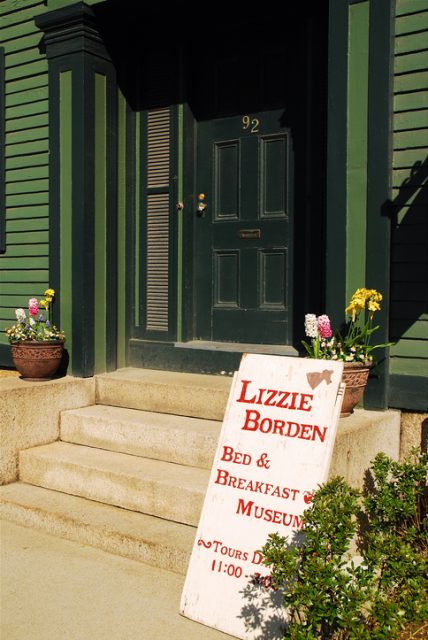
Now, more than a century later, you can not only tour the house — decorated to look exactly like it did at the time of the murders — but spend the night too.
Because, really, what says cozy bed-and-breakfast than a turn-of-the-century Victorian house, tastefully decorated with grisly crime scene photos.
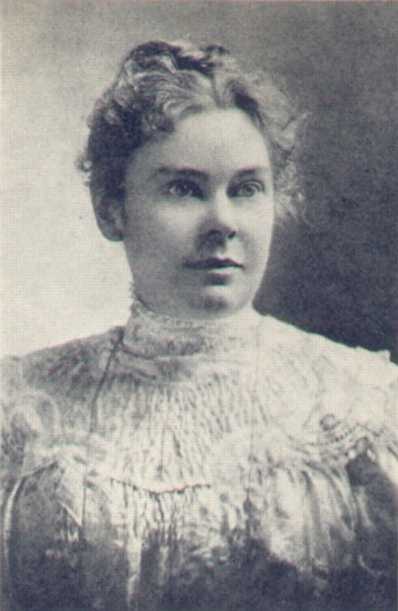
Must see: The collection of Ouija boards in the parlor (perhaps to conjure up ghosts of the family, which are said to haunt the house).
International Cryptozoology Museum | Portland, Maine
What is cryptozoology, you ask? The literal translation is “the study of hidden animals.”
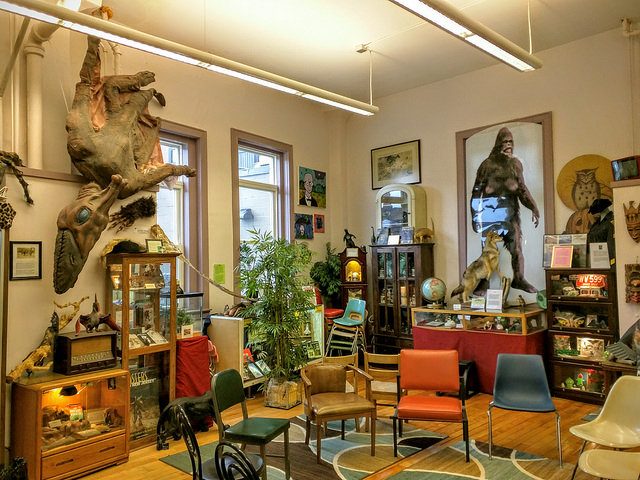
Put another way: an obsession with big, hairy, scary creatures whose existence has yet to be proven — think Bigfoot or the Loch Ness monster.
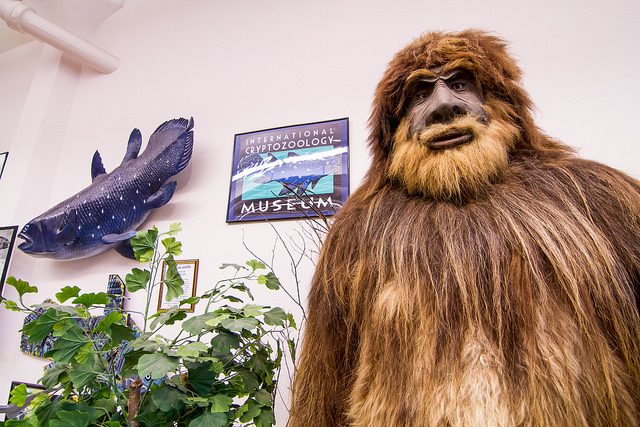
There’s no doubt about where the curators of this museum stand. Offerings include hair samples and casts made of gigantic footprints from Bigfoot and Abominable Showmen, and fecal matter from a Yeti (an ape-like creature said to inhabit the Himalayan regions of Nepal and Tibet), collected by the Tom Slick-F. Kirk Johnson Snowman Expedition of 1959. So there!
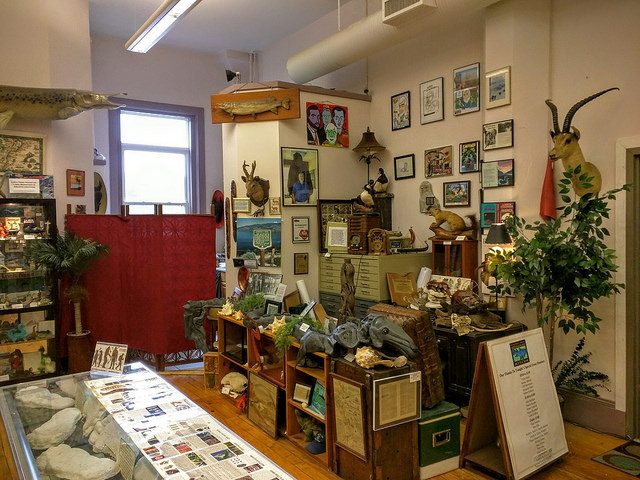
Must see: Steadfast unbelievers will prefer life-size models of actual zoological discoveries, such as the okapi, a half giraffe/half zebra from Central Africa, and the megamouth shark discovered in 1976 off the coast of Hawaii.
Vent Haven Museum, Fort Mitchell, Kentucky
Do ventriloquist dummies give you the willies? Join the club. For decades the wide-eyed, wooden-faced creatures have been used as instruments of terror in episodes of The Twilight Zone and Alfred Hitchcock Presents.
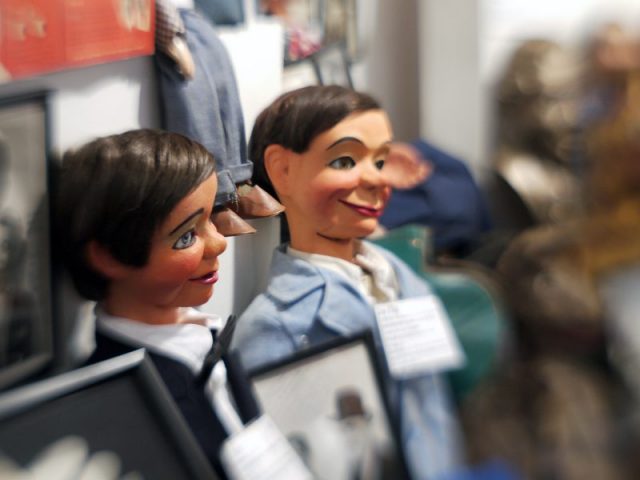
They even have their own phobia: Automatonophobia. So imagine being in close proximity to more than 800 of these figurines operated by vents (that’s show-biz slang for ventriloquists) from the 19th, 20th, and 21st centuries.
Vent Haven was born after dummy collector William Shakespeare Berger (you can call him W.S.) amassed a collection over forty years that grew too big to keep in the garage of his home. Sure, roll your eyes — it scored five stars on TripAdvisor.
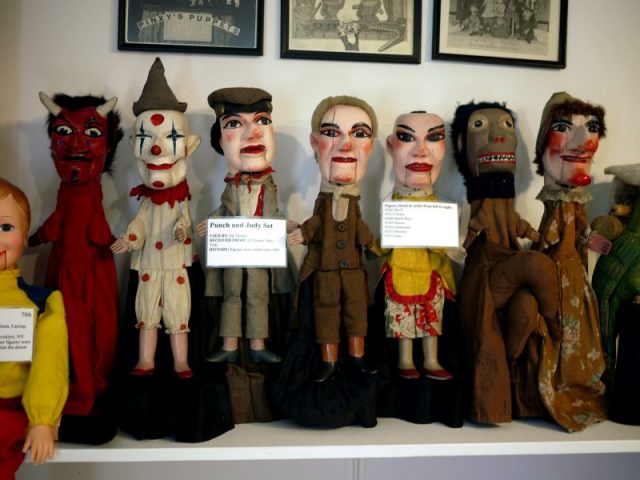
Must see: A papier-mâché replica of Marilyn Monroe, made in the 1950s. Using a slide gizmo in the back, you can wiggle her you-know-whats up and down.
The House on the Rock – Spring Green, Wisconsin
Almost impossible to describe (though we’re gonna give it a shot): House on the Rock is a homage to…stuff. Lots and lots (and lots) of stuff. A veritable cornucopia of crap, in fact.
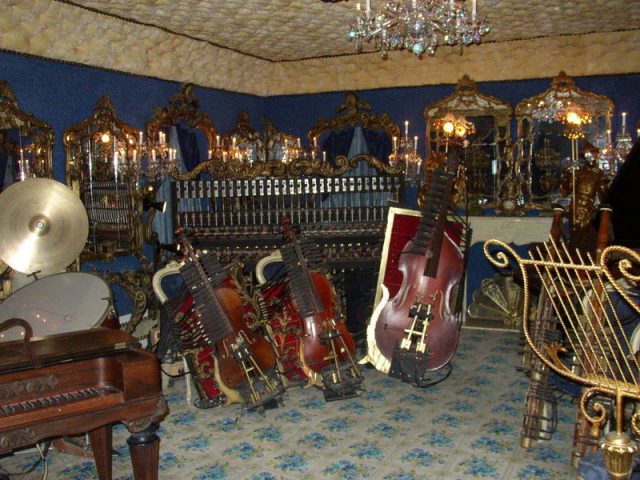
This tribute to excess is brainchild of Alex Jordan Jr., a recluse who reportedly set out to build a rugged retreat in the late 1960s, only to end up with the world’s most horrifying fun house, comprised of dark cavern-like rooms filled with cracked windows, enough dust to send asthmatics searching for the nearest exits, and zany collections, tossed together with no discernable theme in mind.
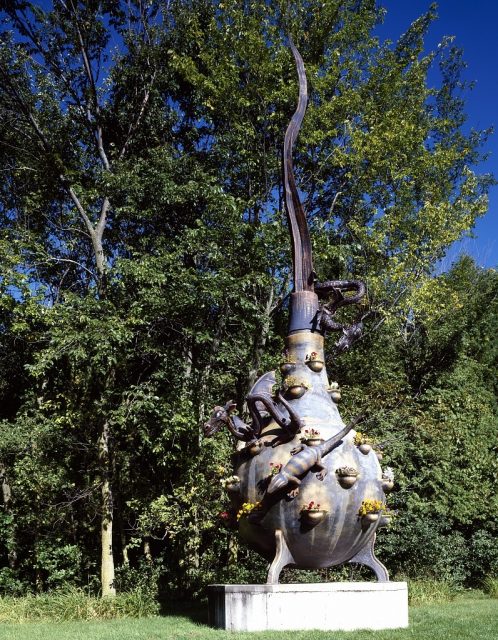
Among them: a 200-foot-long sea monster, a display of medieval knights doing battle, mangled mannequins that have seen better days, and a severed head.
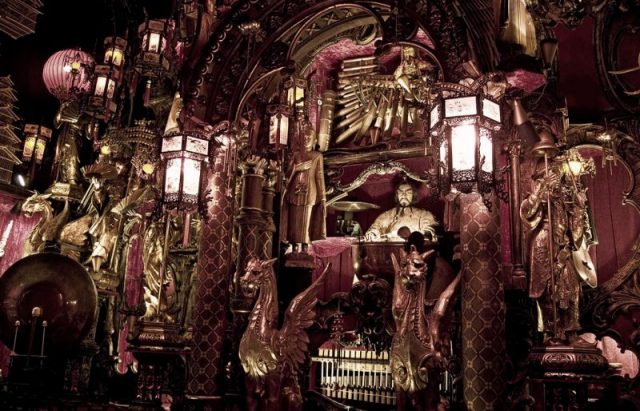
Must see: Dubbed “the world’s largest indoor carousel” (by management, anyway), it boasts 269 animals, 182 chandeliers, over 20,000 lights, and hundreds of mannequin topless angels.
National Museum of Funeral History, Houston, Texas
Sure, the thought of our inevitable demise makes us more than a little uncomfortable, but those with morbid curiosities will lap up the exhibits at this temple to eternal rest — boasting “America’s largest collection of authentic, historical funeral service items.”
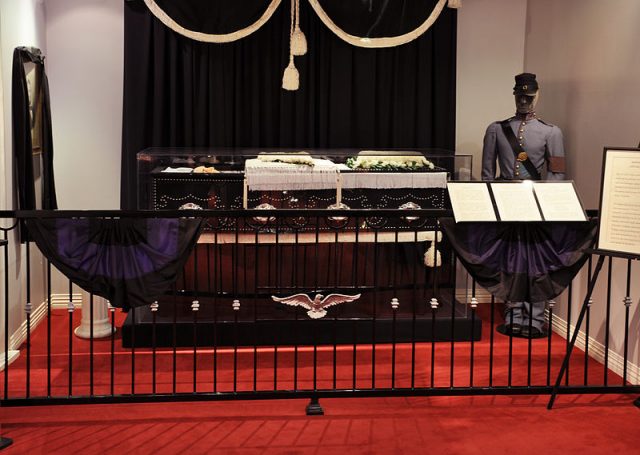
There’s the Thanks for the Memories exhibit, which offers memorabilia used in the sendoffs (i.e. memorial services and burials) of some of Hollywood’s most famous celebrities, such as Michael Jackson, Marilyn Monroe, Frank Sinatra, Whitney Houston, as well as enough caskets to make The Container Store CEOs green with envy.
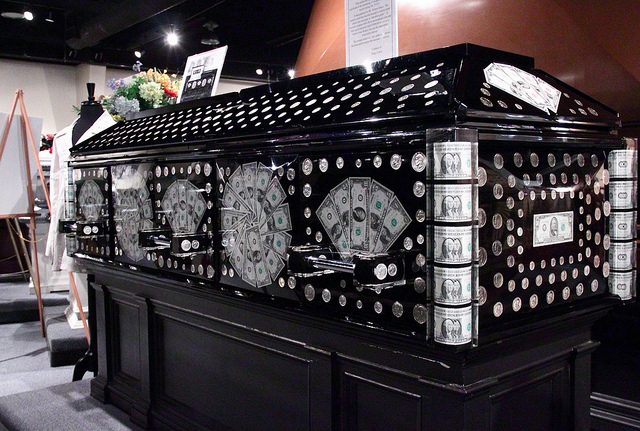
Other exhibits range from the somewhat dignified (the very last casket made by the Marsellus Casket Company, considered the “Rolls Royce of Caskets,” who count Presidents Kennedy, Nixon, Truman and Reagan among their, uh, clients), to downright daffy (Disney fans can see a glass-paneled coffin made to resemble the one featured in 1937’s “Snow White and the Seven Dwarfs”).
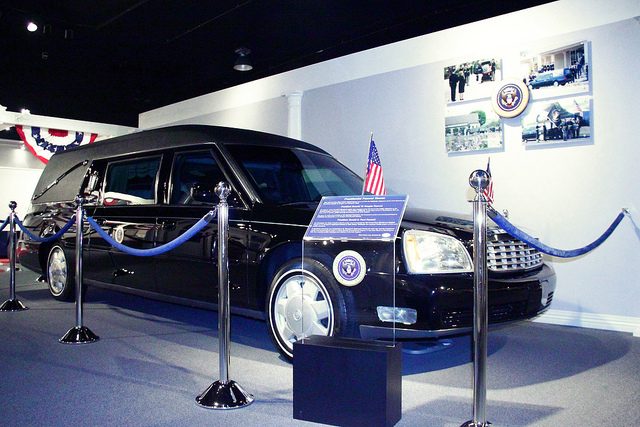
Other eerie offerings include a disquietingly up-close look at the history of cremation and embalming (admit it — you’re kind of curious). Can’t make the trip? Hit the gift shop and pick up a coffee mug that reads “Any Day Above Ground Is a Good One.” Amen to that, sister.
Must see: Some of the strangest receptacles ever created to hold the dearly departed. Among them, a casket built for three people and another made with real dollar bills and coins. Who says you can’t take it with you?
Mütter Museum | Philadelphia, Pennsylvania
This exhibition contains images and medical specimens that some visitors may find disturbing, warn the people who run the Mütter Museum. No kidding.
The Mütter Museum is home to a collection of over 25,000 medical curiosities and pathological paraphernalia, named after Dr. Dent Mütter (1811-1859), an innovative surgeon and acclaimed professor of medicine. Eew!-inspired artifacts abound: Look there’s a piece of Albert Einstein’s brain! Over there, the thorax of assassin John Wilkes Booth.
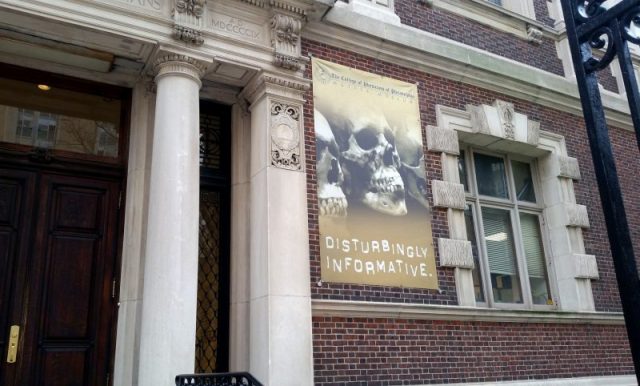
Whoa…a tumor taken from President Grover Cleveland?! Also included in this plethora of all things post-mortem: The Imperfecta exhibit, examining abnormal human development; 2,374 inhaled or swallowed foreign bodies that Dr. Chevalier Jackson (1865-1958) extracted from patients’ throats, esophagi, and lungs during his almost 75-year-long career; and a Hannibal Lecter-like book bound by human skin (a woman’s thigh, to be exact) that dates back to the 1700s. It all adds up to an exhibit that’s freaky, educational, endlessly fascinating. (Though the Civil war amputation kit may be overkill.)
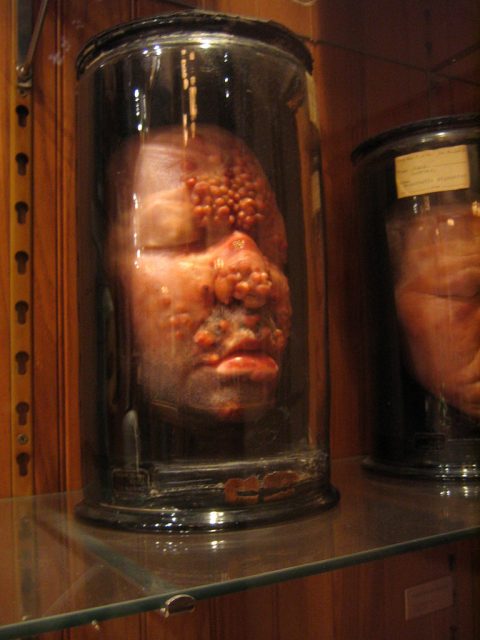
Must see: One of the museum’s most popular exhibits is a wall display of 139 skulls collected by Viennese anatomist Joseph Hyrtl in the 1800s — each with its own intriguing story. One cranium, for example, belonged to an ill-fated tightrope walker who toppled off and broke his neck.
Museum of Death | Los Angeles, California
The giant skull at the entrance of this Hollywood Boulevard museum assures morbid curiosity seekers they’ve come to the right place.
Make no mistake: The displays at the Museum of Death are unapologetically twisted and gruesome.
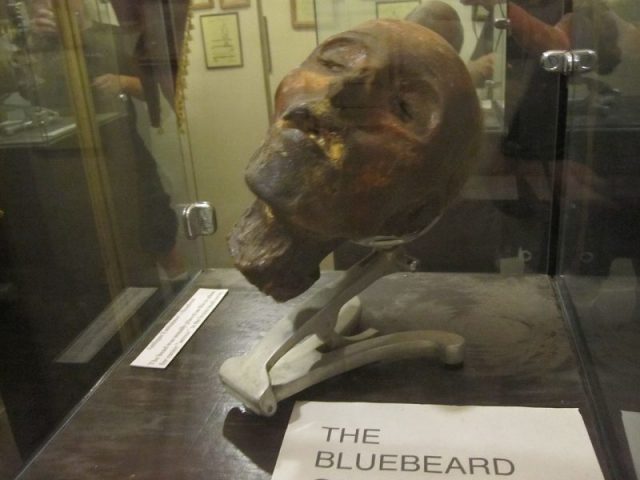
There are unsettling collections of body bags, execution devices, and baby coffins; a head claimed to have belonged to the French lady killer Henri Landru, more commonly known as Bluebeard, who was guillotined in 1922; and Thanatron, one of the suicide machines built by euthanasia advocate Jack Kevorkian, aka “Doctor Death”.
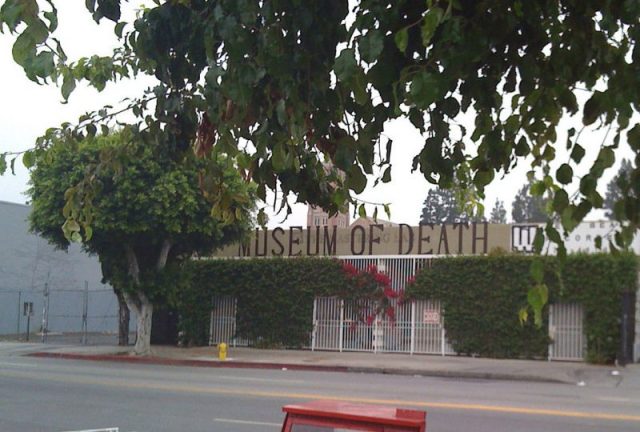
Animal lovers may or may not appreciate a room filled with taxidermy, including Liberace’s cat “Candy” (short for candelabra).
And then there’s the really tasteless stuff — like grisly crime scene photos from the Manson Family murders, as well as “educational” autopsy videos. Can’t make the trip? Check out the offerings on the museum’s website — including a “Rogue Gallery” t-shirt, featuring the visages of Charles Manson, Jeffrey Dahmer, and Richard Ramirez (kind of a Mount Rushmore of lunatics).
Must see: An art gallery featuring the world’s largest collection of paintings by death row inmates like serial killer John Wayne Gacy, along with doodles of David Berkowitz, aka the Son of Sam.
Glore Psychiatric Museum | St. Joseph, Missouri
When it opened in 1874, it was known as the State Hospital for the Insane #2, though House of Horrors was probably a more apt description.
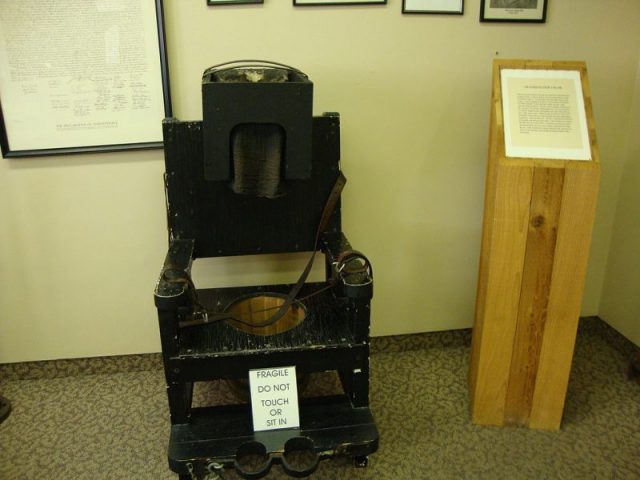
Hundreds of mentally ill patients, from the criminally insane to those suffering from severe depression, passed through its doors.
Today, the Glore Psychiatric Museum, located in a building just outside the gates of the original hospital, houses a number of relics from centuries of misguided attempts to treat mental illness.
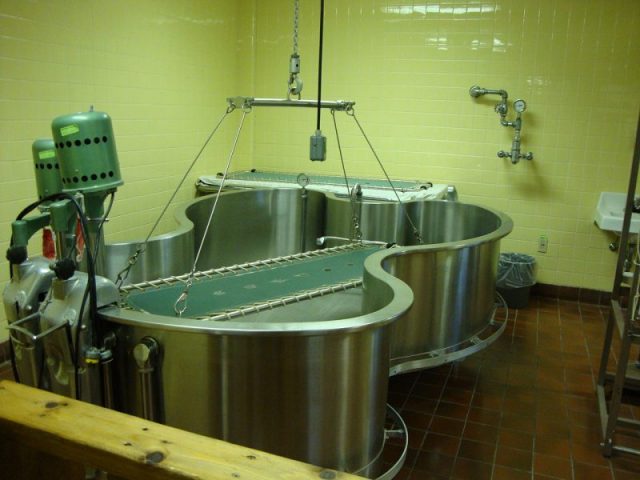
The main focus: life-size replicas, built by George Glore, an employee of the Missouri Department of Mental Health, of primitive equipment used back in the day. Put another way: Torture masquerading as treatment.
The Lunatic Box was an upright, coffin-like box, in which “out-of-control” patients were confined in total darkness for hours; the Giant Patient Treadmill, basically a giant hamster wheel, was theoretically designed for people to walk off excess energy (in reality, they were locked inside and forced to run for up to two straight days).
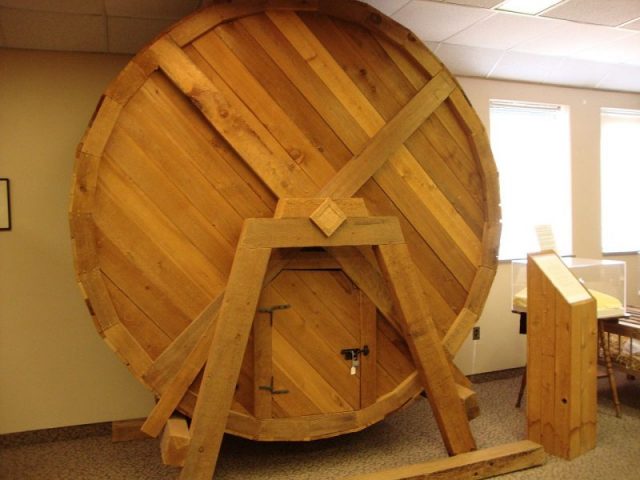
Artful displays are (a little) less disturbing: Schizophrenia Through Embroidery showcases the needlework of a woman who didn’t speak for over 30 years, but communicated through words she stitched into fabric, while another creative arrangement consists of 1,400 objects — including buttons and safety pins — compulsively swallowed by a patient and only discovered during her autopsy.
Read another story from us: The Creepy Icelandic Pants Made of Human Skin
Horrific, hard to shake, and, ultimately, heart-breaking. When a relative was brought to the hospital for admission, they family was often told to bring the clothes they wanted the patient to be buried in, because chances were that he or she would never leave the hospital.
Must see: A collection of Barbie dolls wearing patient attire, complete with mini-straitjackets — a bit of unintended comic relief.
